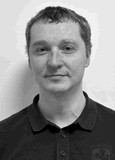Interrelation of speed-strength abilities and indicators of maximum aerobic power
Keywords:
maximum oxygen consumption, Wingate test, speed-strength abilities, aerobic abilities.Abstract
Objective of the study was to evaluate the relationship between the maximum aerobic power demonstrated in tests with different duration of the load and the maximum anaerobic power.
Methods and structure of the study. The experiment involved 13 highly qualified professional single combat athletes (9 men, 4 women, age 26.6±6 years, weight 72±11.7 kg, height 176.2±10.5 cm). The study was conducted in the department of functional diagnostics of the clinic "International Center for Health Protection" (Moscow). All tests were performed on a bicycle ergometer Lode Excalibur (Netherlands). The maximum aerobic power was defined as the load that the subject completed at least 3/4 of the duration of the step before giving up work.
Results and conclusions. It is shown that the absolute maximum aerobic power depends on the rate of load increase in the step test and significantly correlates with the absolute maximum anaerobic power (r=0.68-0.84). For a reliable relationship between the relative indicators of aerobic and anaerobic power, a step test of a shorter duration may be required.
References
Adami A, Sivieri A, Moia C, Perini R, Ferretti G. Effects of step duration in incremental ramp protocols on peak power and maximal oxygen consumption. Eur J Appl Physiol. 2013 Oct; 113(10):2647-53.
Hawley JA, Noakes TD. Peak power output predicts maximal oxygen uptake and performance time in trained cyclists. Eur J Appl Physiol Occup Physiol. 1992; 65(1):79-83.
Horswill CA, Miller JE, Scott JR, Smith CM, Welk G, Van Handel P. Anaerobic and aerobic power in arms and legs of elite senior wrestlers. Int J Sports Med. 1992 Nov;13(8):558-61.
Koziris, L. Perry; Kraemer, William J.; Patton, John F; Travis Triplett, N.; Fry, Andrew C.; Gordon, Scott E.; Knuttgen, Howard G.. Relationship of Aerobic Power to Anaerobic Performance Indices. Journal of Strength and Conditioning Research 10(1): p 35-39, February 1996.
Midgley A.W., Bentley D.J., Luttikholt H. [et al]. Challenging a dogma of exercise physiology: does an incremental exercise test for valid VO2max determination really need to last between 8 and 12 minutes? Sports Med. 2008. Vol. 38(6). pp. 441-447.
Scharhag-Rosenberger F., Carlsohn A., Lundby C., Schüler S., Mayer F., Scharhag J. Can more than one incremental cycling test be performed within one day? Eur J Sport Sci. 2014;14(5):459-67.10.
Serresse O., Lortie G., Bouchard C., Boulay M.R. Estimation of the contribution of the various energy systems during maximal work of short duration. Int J Sports Med. 1988 Dec;9(6):456-60.
Spencer M.R., Gastin P.B. Energy system contribution during 200- to 1500-m running in highly trained athletes. Med Sci Sports Exerc. 2001 Jan;33(1):157-62.
Vinetti G., Fagoni N., Taboni A., Camelio S., di Prampero P.E., Ferretti G. Effects of recovery interval duration on the parameters of the critical power model for incremental exercise. Eur J Appl Physiol. 2017 Sep;117(9):1859-1867.
Weston S.B., Gray A.B., Schneider D.A., Gass G.C. Effect of ramp slope on ventilation thresholds and VO2peak in male cyclists. Int J Sports Med. 2002 Jan;23(1):22-7.
Zarzeczny R., Podleśny M., Polak A. Anaerobic capacity of amateur mountain bikers during the first half of the competition season. Biol Sport. 2013 Sep;30(3):189-94.


